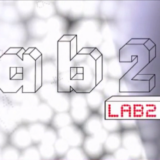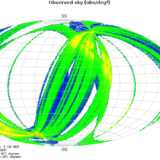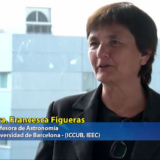“La misión Gaia. Una máquina de descubrimientos” (Congreso Estatal de Astronomía, Granada, 2 May 2014)
Conference: XXI Congreso Estatal de Astronomía (Granada, 2 May 2014) Title: “La misión Gaia. Una máquina de descubrimientos” Emission date: 2 May 2014 Link to the video of the talk given by F. Figueras during the XXI Congreso Estatal de Astronomía (Granada, 2 May 2014), giving an overview of the Gaia mission. Here you have the video of her talk (in spanish).
read moreGaia first discovery: surprise space debris
Original link: New Scientist A robotic galaxy mapper may have just made its first discovery – by surviving an unexpected onslaught of space debris. Scientists working with the European Space Agency’s Gaia satellite have found that the spacecraft is being peppered by far more micrometeoroids – tiny specks of space dust – than had been anticipated. The strikes shouldn’t put Gaia in danger, although mission scientists will have to watch closely as the spacecraft begins its scientific observations. And the discovery might spell trouble for future spacecraft headed to the same orbital...
read moreRaising Gaia, Europe’s Brainchild (El País, 4 July 2014)
Newspaper: El País Title: “Raising Gaia, Europe’s Brainchild” Webpage: elpais.com Publication date: 4 July 2014 Raising Gaia, Europe’s Brainchild By Xavier Luri Carrascoso, University of Barcelona Working on a space mission is a bit like raising children: it takes years, patience and some suffering, but it is also very rewarding. For me parenthood and the work on a space mission started around 2001, when my wife, Isabel, gave birth to our daughter Ana and the European Space Agency (ESA) approved the Gaia mission. Gaia’s main goal is to measure the distance to one billion...
read moreGaia current status
Skymap movie This “skymap” figure illustrates the areas of the sky that Gaia has already observed during these roughly five months of Commissioning. The axes are Equatorial coordinates (right ascension and declination), wheras the color scale indicates the measurement density (as observations per square degree). Such density depends both on the sky in itself and on the “scanning law” followed by Gaia. As we can see, there are areas where the density is significantly higher than in others. This is due to the special scanning laws in which Gaia has been operated during...
read moreGaia mission at UB TV
TV show: UB television Title: “La missió Gaia” Emission date: 8 April 2014 Link to the video about the ESA Gaia mission and our involvement produced by UB television. This video is only available in spanish or catalan. Carregant vídeo…
read more









